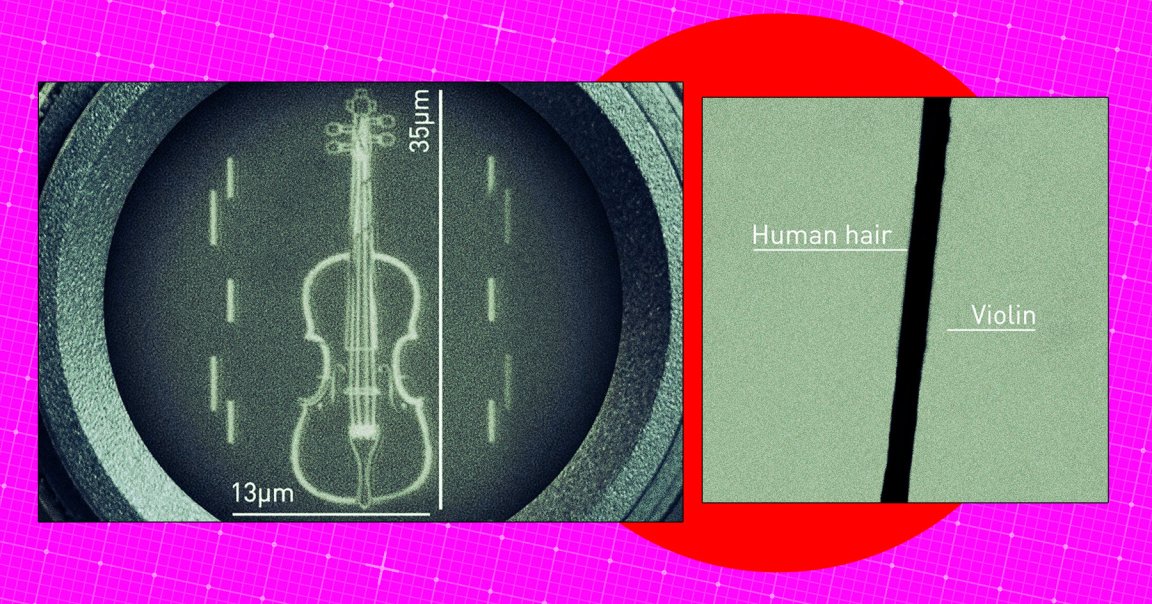
A team of nanoscientists in the UK say they’ve created the “world’s smallest violin,” which many public figures could probably use this week.
Narrower than the width of a human hair, it boasts equal parts meme and engineering potential, and serves as a cheeky proof of concept for a cutting-edge approach to designing structures at the smallest scales that humans can possibly tinker at.
But if you were hoping for some literal fiddling on a dust-speck-sized Stradivarius, think again. What the researchers have actually created is a microscopic image of a violin etched on to the surface a little chip, not a playable instrument.
That said, it’s still an impressive achievement. The image is finely detailed and unmistakably a depiction of a violin, despite being just 35 microns — that’s one millionth of a meter — long, and 13 microns wide. Human hair is typically in the ballpark of 75 microns in diameter, for reference.
If you’re still confused, the researchers insist that this isn’t just some elaborate joke.
“Though creating the world’s smallest violin may seem like fun and games, a lot of what we’ve learned in the process has actually laid the groundwork for the research we’re now undertaking,” said Kelly Morrison, head of the physics department at Loughborough University, in a statement about the work.

To begin their masquerade as luthiers, Morrison and her team coated a small chip with two layers of a gel called a resist, and then used a nano-sculpting machine to etch the violin design into the top layer. The machine, dubbed NanoFrazor, employs what’s known as thermal scanning probe lithography to instantly — and very precisely — transform the resist gel into a gas by zapping it with a sharp, heated tip.
From there, the underlayer was dissolved to form a violin-shaped mold. This was filled in with a thin layer of platinum, before acetone was finally applied to wash away everything but the shiny filling. And voilà: you have the “world’s smallest violin” — quotes mandatory — recognizable only under a microscope and appearing to the naked eye as no more than a speck of dust on its chip canvas.
In all, it took Morrison and her colleagues three hours to create the image, but they spent several more months refining and performing experiments on it.
It was all worth it. What they’ve demonstrated, beyond their sense of humor, is extreme precision — and more to the point, that these nanolithography systems could be used in more practical applications on the bleeding edge, like creating computer parts at the nanoscale.
“Our nanolithography system allows us to design experiments that probe materials in different ways — using light, magnetism, or electricity — and observe their responses,” Morrison said. “Once we understand how materials behave, we can start applying that knowledge to develop new technologies, whether it’s improving computing efficiency or finding new ways to harvest energy.
More on hard science: Physicists Say We Were Completely Wrong About How Gravity Works